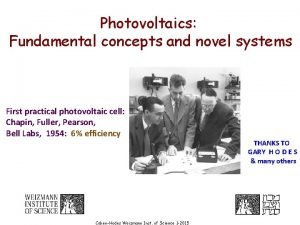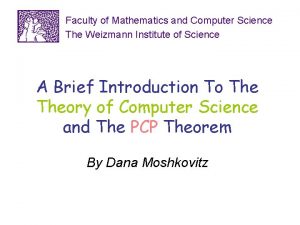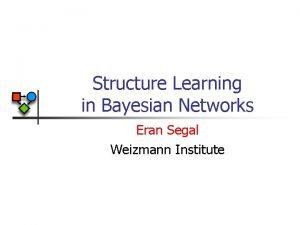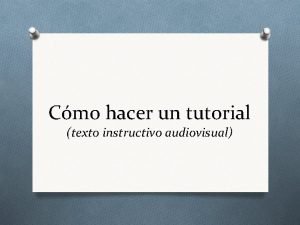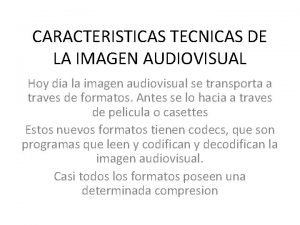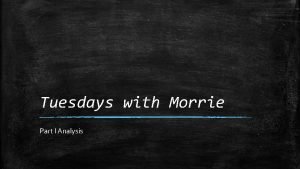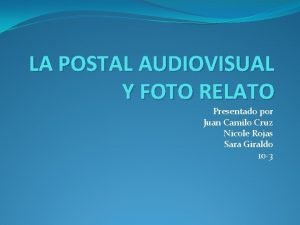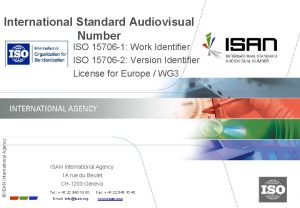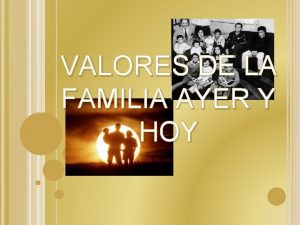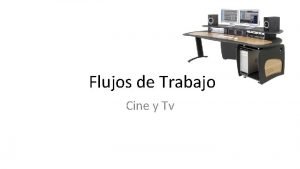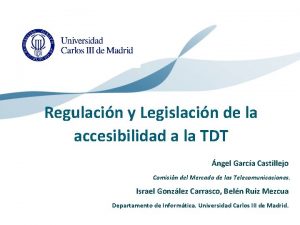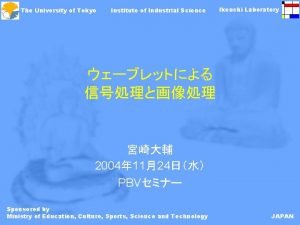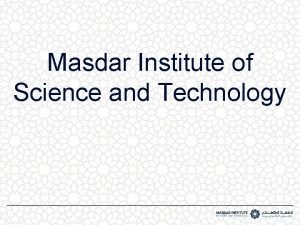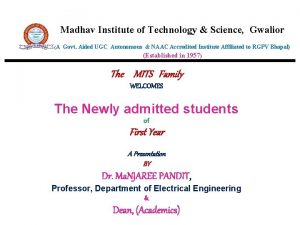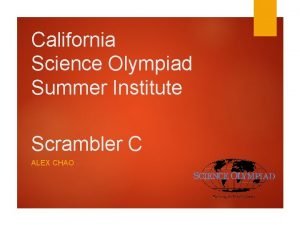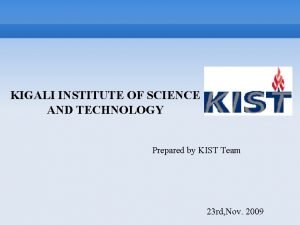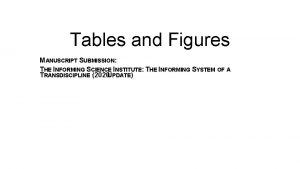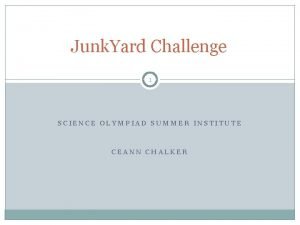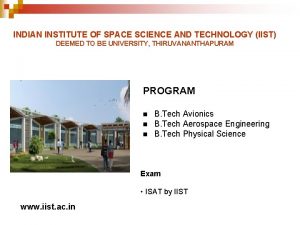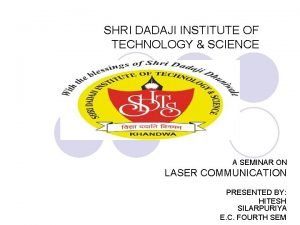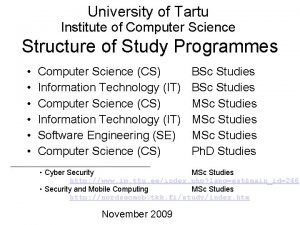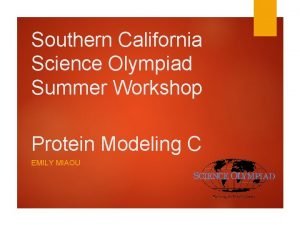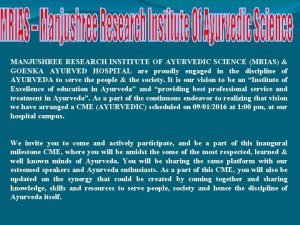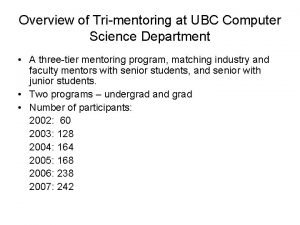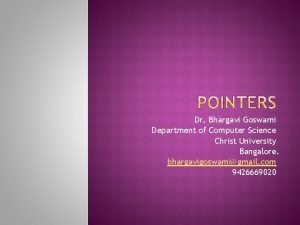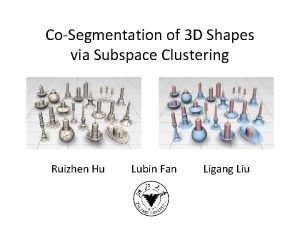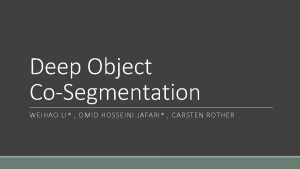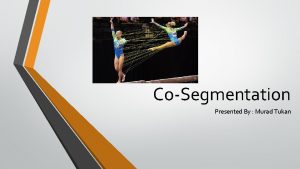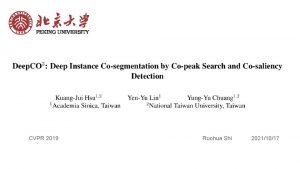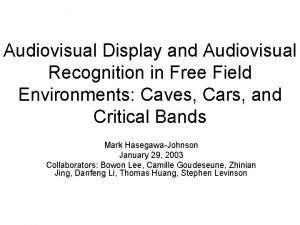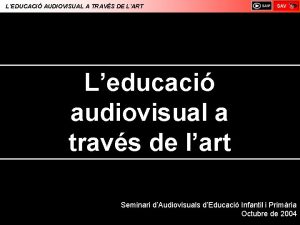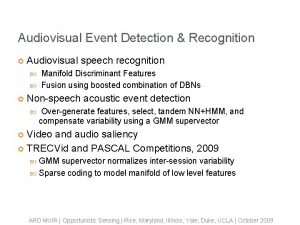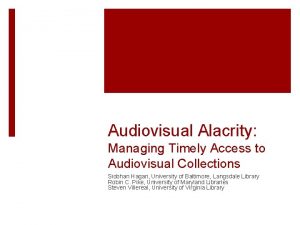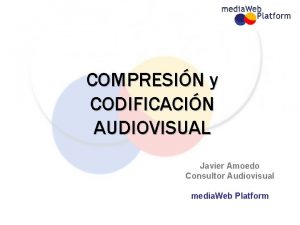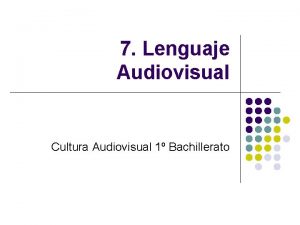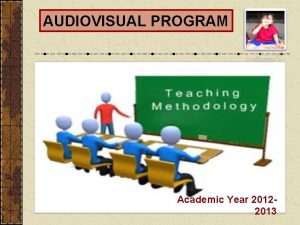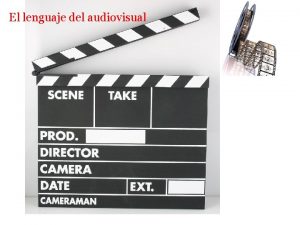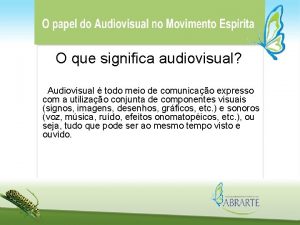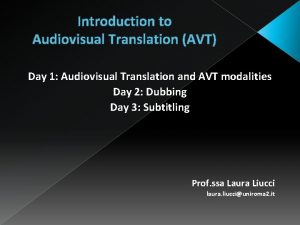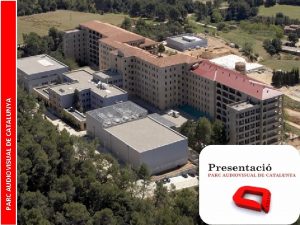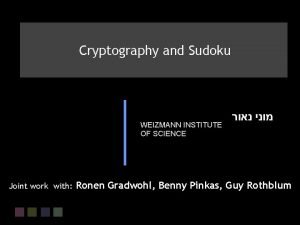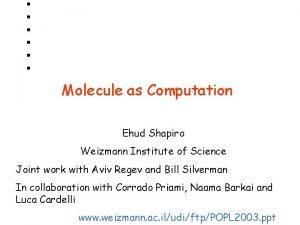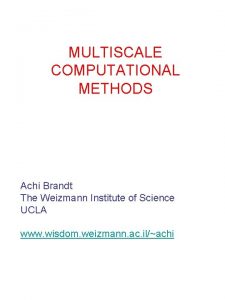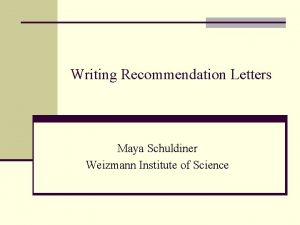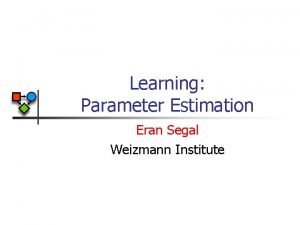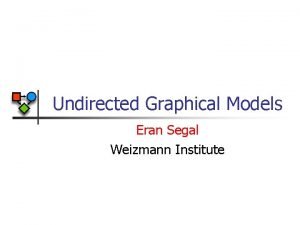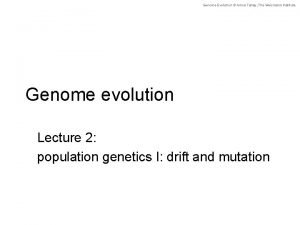SELFSUPERVISED AUDIOVISUAL COSEGMENTATION Weizmann Institute of Science Department












































- Slides: 44

SELF-SUPERVISED AUDIOVISUAL CO-SEGMENTATION Weizmann Institute of Science Department of CS and Applied Math. By: Ilan Aizelman, Natan Bibelnik

Outline Part 1 • Look, Listen and Learn by Relja Arandjelovic´ and Andrew Zisserman • Objects that Sound by Relja Arandjelovic´ and Andrew Zisserman Part 2 • Learning to Lip Read from watching videos by Joon Son Chung and Andrew Zisserman • Dip Reading sentences in the wild by Joon Son Chung

Before we begin There are many papers that. . Were published almost in the same time, and are very similar

The Sound of Pixels (Sept 2018)

Audio-Visual Scene Analysis with Self-Supervised Multisensory Features (OCT 2018)

Look, Listen and Learn by Relja Arandjelovic´ and Andrew Zisserman

Motivation: they use self-supervised learning • Unsupervised learning • The datasets do not need to be manually labelled. • Training data is automatically labelled. • Goal: finding correlation between inputs

Main focus: Visual and Audio events • Visual and audio events tend to occur together: • Baby crying. .


What do we learn? • What can be learnt by unlabelled videos? • By constructing an Audio-Visual Correspondence (AVC) learning task that enables visual and audio networks to be jointly trained from scratch, we’ll see that…

Given 1. Given Audio input, what’s the related Visual output? Also Called: Cross/Intra-mode retrival • Neural Network will learn useful semantic concepts Predict

2. Localization! • “Which sound fits well with this image? ”

Our main focus in this paper 3. Correlation • “Does the (Visual, Audio) pair correlated? ” • Yes: Positive • No: Negative

High-level Overview The Network should learn to determine whether a pair of (video frame, short audio clip) correspond to each other or not.

The NN learns to detect various semantic concepts in both the visual and the audio domain

Network Architecture • Inputs: • Frame • One second audio clip • Output: • Predict if frame corresponds to audio clip

Fusion network • Outputs are concatenated, then passed through 2 fully connected layers.

Implementation details Training • Kinetics dataset – (human action classification) • approx 20 k videos with labels. Labels are used only for baselines. • Flickr Dataset (sentence-based image description) • The first 10 seconds of each of 500 k videos from. Flickr.

Sampling Video 1 • Corresponding pair: pick a random 1 second sound clip from a random video, then select a random frame overlapping that 1 second. Video 1 • Non-Corresponding pair(Negtive): pick two random videos, and take a random frame from one and a random audio clip from the other. • Train on 16 GPUs for two days. Video 2

Evaluation results of: AVC Task We evaluate the results on 3 baselines:

Supervised direct baseline (supervised learning) 1. Same networks (Visual and Audio) – supervised train 2. Modified FC layers - output to 34 action classes. 3. Finally, correspondence score is computed as the similarity of class score distributions of the two networks.

Pre-training baseline •

Visual features evaluation independently • Trained on Flickr-Sound. Net, evaluated on Image. Net. • The methods below use self-supervised learning. • Also, other self-supervised methods trained on imagenet. Random Alexnet + trained classifier Colorization Jigsaw Audio-Visual Correspondence

Audio features evaluation independently •

Audio features evaluation independently • Apply audio subnetwork to ESC-50 and DCASE, two sound classification datasets. • Break into 1 -second clips, features are obtained by max pooling the last conv layer, pre-processed with z-score normalization, and at test time evaluated with a multi-class SVM on the output. • Compare with other self-supervised classification methods, and with Soundnet

Paper 2: Objects that Sound by Relja Arandjelovic´ and Andrew Zisserman Objectives: 1. networks that can embed audio and visual inputs into a common space that is suitable for cross-modal and intra-modal retrieval. (new) 2. a network that can localize the object that sounds in an image, given the audio signal. (new)

But. . How? ? Same way as before • We achieve both of these objectives by training from unlabelled video using only audio-visual correspondence (AVC) as the objective function. But… different Architecture

cross-mode retrieval (Image-to-Sound)

cross-mode retrieval (Sound-to-Image)

Localization

AVE-NET

AVE-NET Architecture This part is the same as previous architecture

To Enforce Alignment Directly Optimizes the features for cross-modal retrieval

Evaluation and results •

Evaluation of Cross-modal and intra-modal retrieval • The performance of a retrieval system is assessed using a standard measure – the normalized discounted cumulative gain (n. DCG). It measures the quality of the ranked list of the top k retrieved items. Cross-modal and intra-modal retrieval. Test set: Audio. Set-Instruments

Why intra-model works? •

Cross-modal and intra-modal retrieval

Localizing objects that sound • Goal in sound localization is to find regions of the image which explain the sound. • We formulate the problem in the Multiple Instance Learning (MIL) framework. • Namely, local region-level image descriptors are extracted on a spatial grid and a similarity score is computed between the audio embedding and each of the vision descriptors.

Audio-Visual Object Localization (AVOL-Net) 14 x 14 x 128 Grid 128 -D vector

produces the localization output in the form of the avc score for each spatial location FC to Conv calibration FC 1 & FC 2 converted to conv 5 conv 6

Localization of objects – mask overlay over the frame

Hypothesis: the network detects only salient objects What in the piano-flute image would make a flute sound? ”

Conclusions • We have seen that the unsupervised audio-visual correspondence task enables, with appropriate network design, two entirely new functionalities to be learnt: 1. cross-modal retrieval. 2. and semantic based localization of objects that sound. • The AVE-Net was shown to perform cross-modal retrieval even better than supervised baselines • The AVOL-Net exhibits impressive object localization capabilities.

 Weizmann institute of science
Weizmann institute of science Weizmann
Weizmann Eli 1010 spectrum
Eli 1010 spectrum Tomorrow
Tomorrow Nir friedman weizmann
Nir friedman weizmann My favourite subject computer
My favourite subject computer Aspectos del lenguaje audiovisual
Aspectos del lenguaje audiovisual Texto instructivo audiovisual.
Texto instructivo audiovisual. Caracteristicas de la imagen audiovisual
Caracteristicas de la imagen audiovisual Tuesdays with morrie the curriculum
Tuesdays with morrie the curriculum Postal audiovisual
Postal audiovisual International standard audiovisual number
International standard audiovisual number Education audiovisual and culture executive agency eacea
Education audiovisual and culture executive agency eacea Los valores de ayer y hoy
Los valores de ayer y hoy Flujo de trabajo audiovisual
Flujo de trabajo audiovisual Ley general de comunicación audiovisual
Ley general de comunicación audiovisual Ramraj classes nashik
Ramraj classes nashik Ulsan national institute of science and technology (unist)
Ulsan national institute of science and technology (unist) Institute of industrial science the university of tokyo
Institute of industrial science the university of tokyo Masdar institute of science and technology
Masdar institute of science and technology Madhav institute of technology and science
Madhav institute of technology and science Scrambler science olympiad
Scrambler science olympiad Korea institute of sport science
Korea institute of sport science Kigali institute of science and technology
Kigali institute of science and technology Informing science institute
Informing science institute Science olympiad summer institute
Science olympiad summer institute Iist pune
Iist pune Hong kong institute for data science
Hong kong institute for data science Shri dadaji institute of technology and science
Shri dadaji institute of technology and science University
University Protein modeling scioly
Protein modeling scioly Philadelphia job corps life science institute
Philadelphia job corps life science institute Manjushree ayurved college
Manjushree ayurved college Institute for basic science
Institute for basic science Corporate institute of science and technology bhopal
Corporate institute of science and technology bhopal Ucl ridgmount practice
Ucl ridgmount practice Northwestern university computer engineering
Northwestern university computer engineering Computer science department rutgers
Computer science department rutgers Department of forensic science dc
Department of forensic science dc Ohio tpes
Ohio tpes Stanford computer science department
Stanford computer science department Fsu computer science
Fsu computer science Ubc computer science department
Ubc computer science department Bhargavi goswami
Bhargavi goswami Iit delhi eacademics
Iit delhi eacademics
